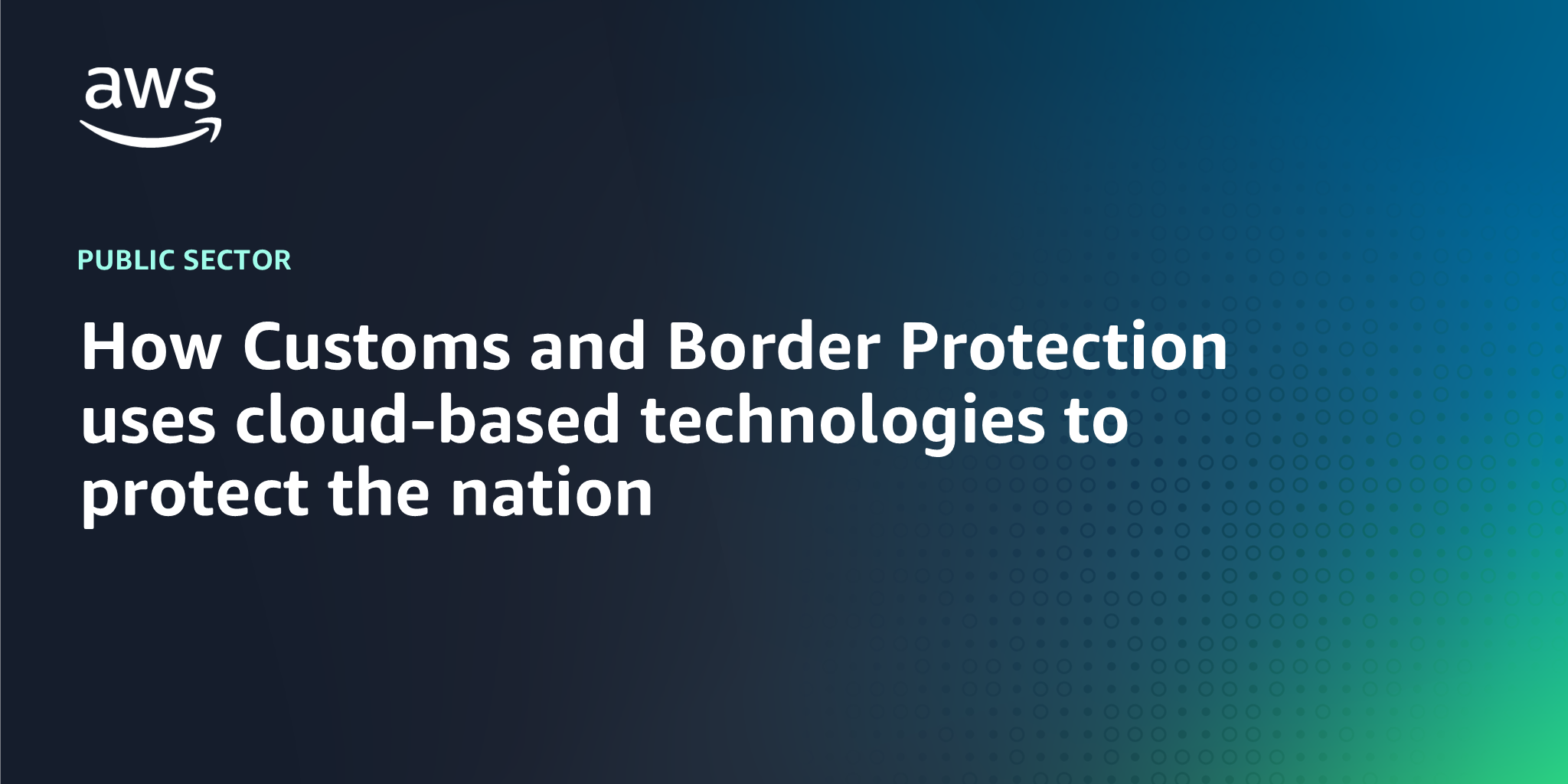AWS Public Sector Blog
How Customs and Border Protection uses cloud-based technologies to protect the nation
United States Customs and Border Protection (CBP) is using cloud computing, generative AI and machine learning to secure US borders and address complex challenges. On a panel at the AWS Summit 2025 event in Washington, DC, two of CBP’s technology leaders discussed how the agency is combating border issues using cloud technology. In this post, we explore the key points and insights shared by the CBP technology leaders.
CBP and the cloud
CBP is a multifaceted, complex agency. It enforces border security, plays a role in counterterrorism and counternarcotics, and enhances fair trade and economic prosperity in the United States. In addition to over 140 border patrol stations, the agency oversees 328 ports of entry. CBP operates in environments ranging from remote deserts to airports, necessitating the use of flexible, scalable technology to fulfil their objectives.
Over the last five years, CBP has gradually migrated over 85 percent of their application tier and 40 percent of their database tier to the cloud. This year, the agency expects to receive funding earmarked for the completion of the cloud migration process. Deputy Assistant Commissioner of Software Applications and Services at CBP’s Office of Information and Technology Jay Alalasundaram stated that the push to adopt cloud technology at the agency started in earnest over four years ago, but the use of AI and machine learning technology at CBP is not new. The agency has been using these tools for years by building them into the backbone of their analysis and processing engines. While technology already plays a key role in completing CBP’s mission, generative AI and the cloud have revolutionized what’s possible for the agency.
Fentanyl at the border
CBP is using cloud technology to aid in the detection of drug trafficking across US borders. “The officers cannot possibly inspect every car that’s coming to our country. Technology becomes extremely critical to be able to detect some of that stuff,” said Alalasundaram. In these noninvasive inspection (NII) situations, cloud technology helps keep CBP officers safe while inspecting vehicles.
Executive Director of Border Enforcement and Management Systems at CBP Baibhav Devkota described how the agency built a ubiquitous cloud environment at ports of entry, including physical infrastructure and network connectivity. This system enables CBP to take images of potential threats and ingest them directly into their cloud environment.
The cloud analyzes the images to help officers determine the level of any threats posed to themselves and their K9s before they physically encounter potentially dangerous objects or substances. The panelists emphasized that CBP takes a human-in-the-loop approach to all their technology use: While the cloud provides information, the officer always makes the final decision.
Cloud at the edge
Devkota prioritizes perfecting the agency’s data pipeline and expanding the use of generative AI technology at what he calls the “edge” of CBP’s mission.
The edge is where CBP officers and agents are operating in remote environments without connectivity or physical infrastructure. Before the cloud, technological aid to officers and agents in such situations involved tools like static computer vision models, which scanned the environment for preprogrammed threats. These legacy models couldn’t be updated remotely because they had no connectivity, which meant they were working with potentially outdated information. With the introduction of cloud access, traditional computer vision models have been augmented with generative AI capabilities to provide CBP with a more thorough analysis to stop drug and weapon trafficking attempts.
Devkota gave the example of a traditional computer vision model being programmed to scan the horizon for threats. Cloud capabilities enable the device to not only identify threats, but to give officers and agents real-time situational awareness. These advanced tools empower CBP to enable more informed operational decision-making and enhanced response capabilities.
CBP border screening with the cloud
CBP uses the cloud to enhance passenger and baggage screening at the border. “Gone are the days when you come from an international trip and officers are processing and scanning your passport … We’re continuing to enhance in that space with newer technologies leveraging biometrics in the cloud, especially on the Trusted Travelers side, like in Global Entry and mobile processing,” said Alalasundaram.
One of CBP’s goals is to enhance passenger processing by using cloud-based technology. This system will enable CBP to clear travelers for entry without the need for the traveler to interact with a kiosk or officer, streamlining the entry process for passengers and reducing demand on CBP resources.
The agency currently uses cloud technology when scanning baggage. Images of suspicious baggage are sent to CBP, which uses tools like Amazon Bedrock, Amazon SageMaker, and other cloud-based tools to detect anomalies. CBP systems sends any anomalous images to their Office of Field Operations officers and operators at the National Targeting Center, who examine the images and determine what actions to take. The use of this technology means travelers don’t have to recheck their bags during domestic layovers, which saves time for passengers transiting through busy airports.
Collaborating with CBP
CBP invites the vendor community to provide solutions to these use cases and others, especially in the NII category. The agency currently works with many partners and is always curious about new technology. Alalasundaram emphasized that CBP’s technology decisions pivot on whether the solution matches a business case, is cost-effective for the agency, and fits its mission.
The leaders invited providers to contact them using CBP Business Connection, a free online platform where US businesses can discuss their products and services with CBP. “They’re always open to having a conversation,” said Alalasundaram. “CBP needs industry help to build solutions,” Devkota added.
To learn more about how cloud technologies can support your mission, contact AWS.
